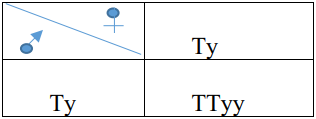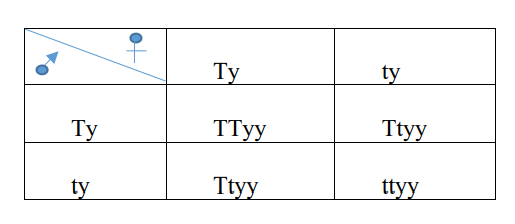Question
(a)
i) Draw a labelled diagram of a replication fork in a prokaryote indicating the process of DNA replication.
ii) Differentiate between the two newly synthesised DNA strands within the fork.
iii) Name the enzymes involved in the process of DNA replication.
(iv) Name the eukaryote where the semi-conservative mode of replication was experimentally proved.
or
(b) You are given a tall pea plant with green seeds. The genotype of this plant is unknown. You are allowed to do 'selfing' of these plants to find out the genotype of the given plant. Work out all possible crosses and show how you would determine the genotype of the given plant.
Answer :
(a)
i)
Template strand (Parental strand), Continuous synthesis, Leading strand, discontinuous synthesis, Lagging strand/Okazaki fragments, Newly synthesized strands, arrow showing the direction of replication(Polarity)
ii) Parental strand with polarity 5’-3’ shows discontinuous synthesis while Parental strand with polarity 3’-5’ shows continuous synthesis.
iii) DNA dependent DNA polymerase, ligase, Helicase, Topoisomerase, Primase ( any two)
iv) Vicia faba /Faba bean
or
(b)Possible genotype: TTyy and Ttyy
Case-1 TTyy X TTyy
Gamete: Ty, Ty
Phenotype of F1- All tall pea plants with green seeds
Conclusion: Given plant is homozygous dominant for plant height and homozygous recessive for seed colour(TTyy)
Case-12 Ttyy X Ttyy
Gamete: Ty, Ty
Phenotype of F1- Tall green : Dwarf green
3 : 1
Conclusion: Given plant is heterozygous for plant height and homozygous recessive for seed colour(Ttyy).



